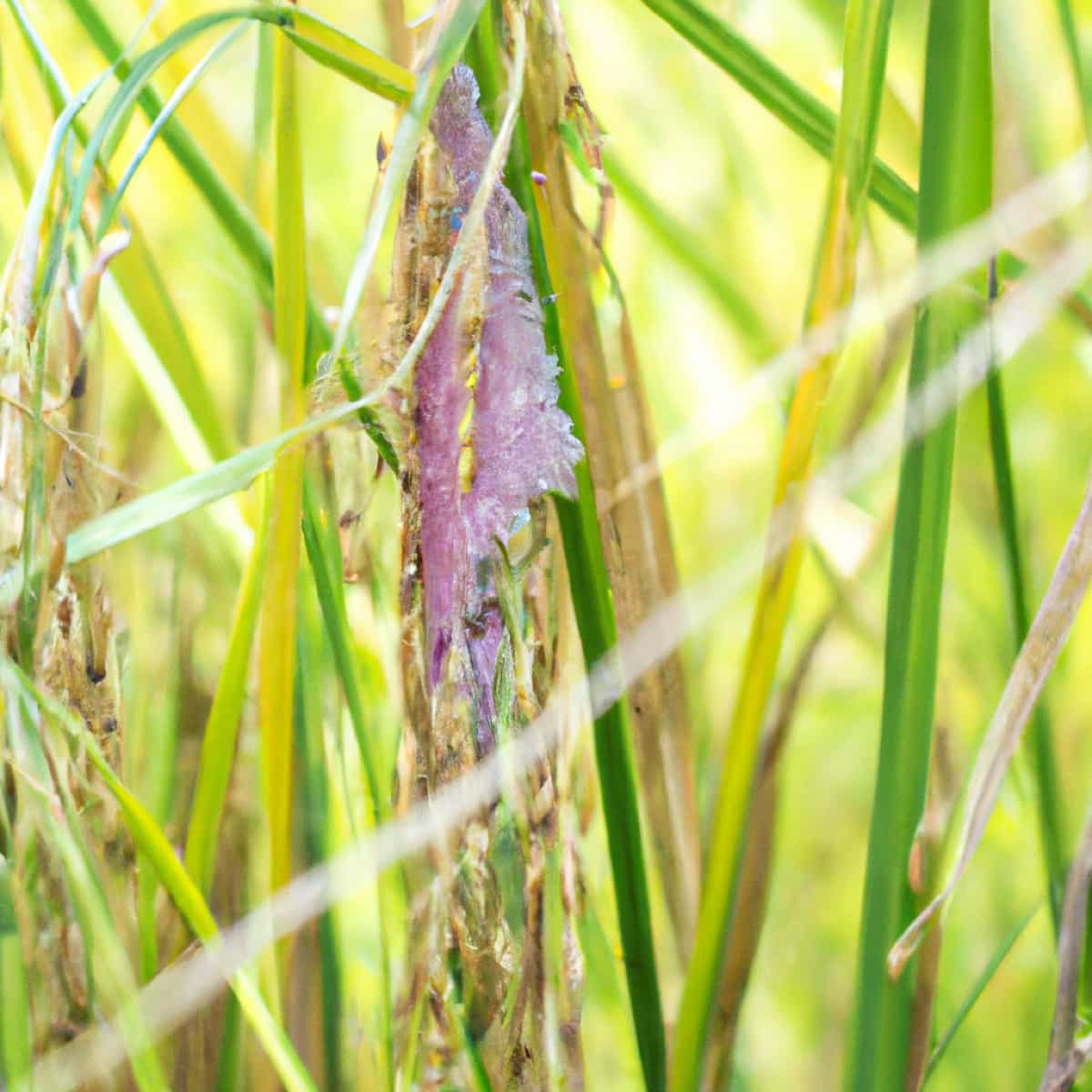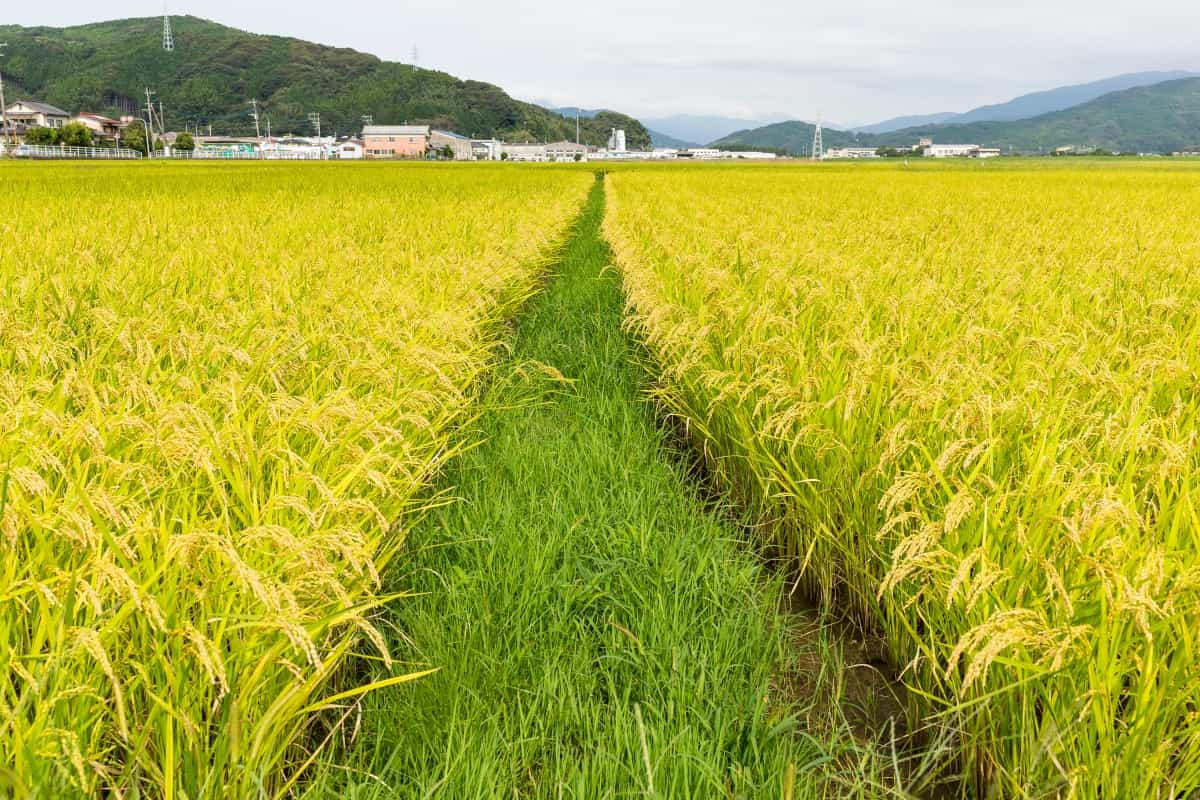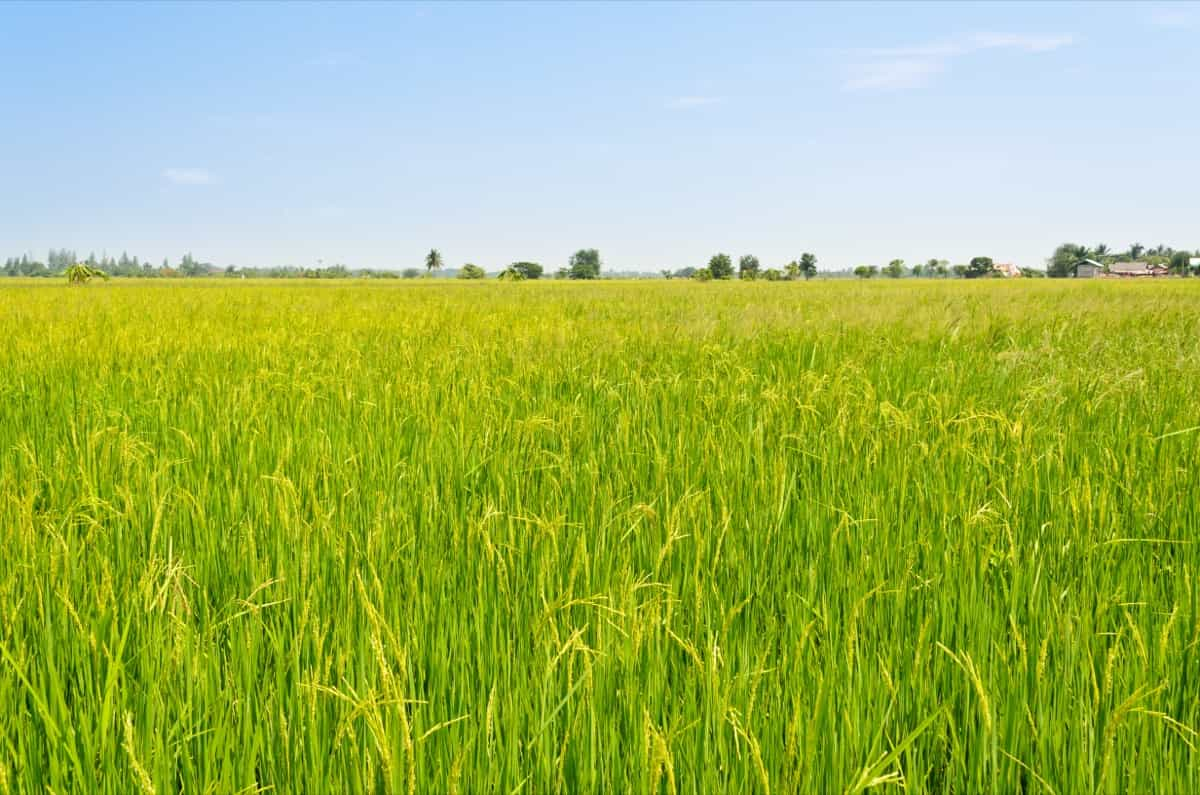Rice stem rot is a disease that affects rice crops worldwide. It was first identified in Italy in 1876 and later reported in India in 1911. A type of fungus, Sclerotium oryzae, causes the disease. It is particularly harmful to rice plants during the vegetative and reproductive stages.

When a rice plant is infected with stem rot, it can result in wilting and death of the plant. The disease can lead to significant yield losses, especially in humid and warm growing conditions. The disease can be particularly severe during August and September, leading to up to 75-100% crop losses.
The disease affects all crop yield components, such as the number of productive tillers and the number of grains produced per panicle. Stem rot disease can lead to the formation of lesions, chalky grains, and unfilled panicles. Stem rot has been detected in rice-growing regions across the world, including Japan, China, the Philippines, Ceylon, Italy, Brazil, and the United States of America.
Stem Rot disease management in Paddy
The causal organism of Rice Stem Rot disease
- Nakataea sigmoidea and Sclerotium oryzae are two fungus stages that affect rice crops.
- The fungus grows as a greyish-white to pale-olive mycelium and produces small black sclerotia.
- In the conidial stage, the fungus produces dark, nodular conidiophores with pale-olivaceous conidia.
- The sexual stage of the fungus, Magnaporthe Salvini, produces globose, black perithecia containing clavate asci and oblong ascospores.
- The fungus affects the growth of the culm and leaf sheath of the rice plant and produces sclerotia.
- Sclerotia, or infection bodies, are found in the topsoil layer. They can live in air-dry soil, damp rice soil, and tap water.
The Disease cycle of Rice Stem Rot disease
- The disease caused by Sclerotium oryzae is a late-season, soil-borne disease.
- It develops rapidly during the reproductive stage of the rice plant, around its physiological maturity.
- The pathogen perennates through sclerotia in the soil and can persist for several months or even two years in stubbles.
- The sclerotia can spread from field to field or plant to plant by floating on water.
- Sclerotia are responsible for primary infection, while conidia produced can cause secondary infections through spread in irrigation water.
- They may also live on straw that has been buried in the soil. During soil preparation, sclerotia float on irrigation water and infect newly planted rice.
Favorable conditions for the spread of Rice Stem Rot disease
- High nitrogen levels promote stem rot, although potassium mitigates the adverse effects of excess nitrogen.
- Phosphorus promotes the disease as well but to a lesser extent.
- Silica prevents the disease.
- Early-seeded crops and early-maturing varieties are more affected.
- Infection is common in plants that have wounds from lodging or insect assault. Plants infected with stem borers have a disease incidence two or three times greater.
- Disease development is also influenced by panicle moisture content.
In case you missed it: Bacterial Leaf Blight Management in Paddy: Symptoms, Treatment, Chemical, Biological, Natural, and Organic Control

Symptoms of Rice Stem Rot disease in Paddy
- Numerous small white and black sclerotia and mycelium indicate stem rot in infected culms.
- Infected culms cause lodging and unfilled panicles with chalky grain.
- The disease makes the plants more likely to lodge.
- Small black lesions on the outer leaf sheath appear at the water level first, then spread as the disease progresses.
- The fungus enters the inner leaf sheath, producing leaf rot and the production of sclerotia.
- One or two internodes decay and collapse due to stem infection, with minute black sclerotia, spots evident in split internodes.
- A severe infection might lead to tiller death.
Percentage of yield loss due to Rice Stem Rot disease in Paddy crop
- Rice crop infection occurs during early heading and grain filling.
- Leaf-sheaths decay, causing lodging and lower grain filling.
- Heavy losses occur globally, with Japan having 51,000-122,000 hectares infected and annual losses of 16,000-35,000.
- In Vietnam, the Philippines, and India, losses of 30% to 80% have been recorded due to Rice stem rot disease in paddy crops.
Rice Stem Rot disease management in Paddy by cultural methods
- Burn-infested paddy straw and paddy stubbles.
- Avoid flooding the field continuously.
- Use plant disease-resistant varieties.
- Allowing straw to degrade and draining the field can help to decrease sclerotia in the field.
- Crop rotation has been beneficial to some extent.
- To raise soil pH, balance fertilizer use or apply high potash and lime in two applications.
Rice Stem Rot disease management in Paddy by biological methods
- Various biocontrol agents have been developed and used to control the spread of this illness.
- Cattaneo, P. fluorescens, P. aeruginosa, B. subtilis, and B. pumilus are among them. These biocontrol agents have been shown to lower disease severity and hence limit stem rot losses effectively.
- Using biocontrol agents as a disease management technique is a low-cost and long-term solution.
Rice Stem Rot disease management in Paddy by chemical methods
- Chemicals such as fentin hydroxide sprayed at the mid-tillering stage and thiophanate-methyl sprayed after disease commencement can minimize stem rot incidence in rice fields.
- Fungicides such as Ferimzone and validamycin A are also efficient against the fungus.
- To raise soil pH, balance fertilizer use or apply high potash and lime in two applications.
- 0.2% Baristin or Topsin-M spray is beneficial in significantly lowering disease incidence.
Rice Stem Rot disease management in Paddy by natural/organic methods
- Rice stem rot disease may be controlled in various natural or organic ways.
- By rotating the rice crop with other crops, the soil is refreshed with critical nutrients, and the causative organism’s buildup is decreased.
- Spraying Eucalyptus leaves infusion or Gingerbread infusion by adding to water can manage diseases like Bacterial blight, Brown leaf spot, stem rot, and sheath blight to some extent.
In case you missed it: Rice Blast Disease Management in Paddy: Symptoms, Treatment, Chemical, Biological, Natural, and Organic Control

Conclusion
Efficient management of rice stem rot disease necessitates using various control approaches, including chemical, biological, natural, and organic methods. Early diagnosis of symptoms and quick treatment are critical for reducing illness severity and losses.
Proper cultural practices, adopting resistant cultivars, and applying biocontrol agents can all help reduce stem rot development. Furthermore, organic and natural approaches like crop rotation, bio-fertilizers, and correct harvest and storage procedures can assist farmers in managing stem rot and sustainably improving their rice harvests’ health.
- Beneficial Insects in Pest Management
- Natural Solutions for Pest Control in Flower Gardens
- Types of Fungicides Used in Agriculture
- Common Issues in the Fruit Development Stage of Pomegranate Farming
- Fruit Development Issues in Papaya: Easy Solutions and Treatment
- Soil-Borne Diseases and How to Protect Your Plants
- Practices to Prevent Disease Spread in the Garden
- From Wilted to Thriving: How to Treat Root Rot Naturally in Houseplants
- Natural Remedies to Cure Brown Spots on Fig Tree Leaves